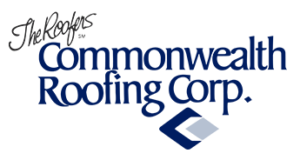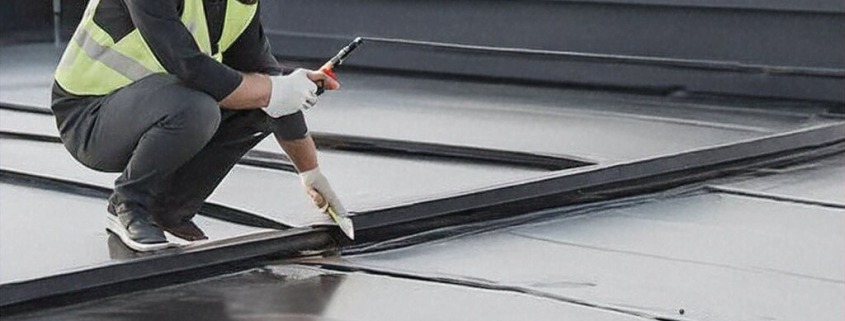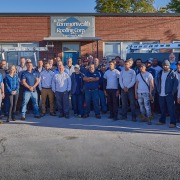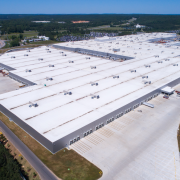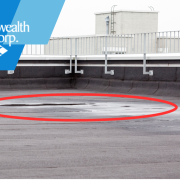Why Repairing Your Commercial Roof Now, Can Save You Big Later
Why Repairing Your Commercial Roof Now, Can Save You Big Later
When it comes to a commercial roof, small issues don’t stay small. A loose seam, tiny puncture, or clogged drain can let water in, soak insulation, raise energy bills, and set up costly interior damage. Waiting turns an easy repair into a bigger bill — and sometimes a preventable shutdown.
This guide explains why fast action saves money, what to watch for, and how to plan simple steps that keep your roof performing longer.
The Cost Curve: Why Waiting Gets Expensive
A commercial roof often fails in stages. Each stage adds cost.
- Minor defect
Examples: a pinhole in the membrane, a lifted edge, a cracked lap.
Typical fix: simple patch or re-adhesion during maintenance.
Risk: low — if caught early. - Active leak
Water reaches the deck or insulation.
Added cost: wet insulation loses R-value and must be removed and replaced. Mold risk grows. - System damage
Saturated insulation spreads moisture sideways. Deck corrosion or fastener failure can follow.
Added cost: structural repairs, larger tear-offs, interior remediation, production interruptions. - Premature replacement
Neglected problems shorten roof life by years.
Added cost: unplanned spending and scheduling pressure, often at the worst possible time.
Bottom line: Early repairs are cheaper than late replacements — and they protect your inventory, equipment, and people.
Early Warning Signs You Shouldn’t Ignore
- Stains on ceilings or walls
- Musty smells after rain
- Ponding water that lingers more than 48 hours
- Blisters, splits, or loose flashing
- Rusted or loose rooftop units and curbs
- Clogged drains and scuppers
- Unexplained spikes in energy use
If you see one, assume there are others nearby. Moisture rarely stays put — it migrates.
Why Professional Inspections Find What Others Miss
Moisture travels
The drip inside your facility may be 20 feet from the source. Tracing it takes training, method, and the right tools.
Details matter
The most common leak points are seams, penetrations, terminations, and drains. A disciplined checklist prevents shortcuts.
Documentation speeds decisions
Clear photos, simple summaries, and prioritized actions help you approve the right repair quickly — and avoid scope creep.
Maintenance That Pays For Itself
A steady, light-touch maintenance plan costs less than sporadic emergency work. Aim for:
- Spring and fall roof walks — remove debris, clear drains, check seams and flashings.
- Documented findings — photos, locations, severity, recommendations.
- Right-sized repairs — fix active issues now, schedule preventive work during off-peak times.
- After-storm checks — hail, high winds, or heavy snow deserve a quick look.
This approach extends roof life, stabilizes budgets, and reduces surprise downtime.
A Simple Next Step
Don’t wait for a stain to turn into a shutdown. Schedule a quick roof inspection and address small defects before they spread. Early action protects your building, lowers risk, and saves money over the life of your roof.
Safety, Service, & Quality — every day since 1981.
Louisville: (502) 459-2216
Hebron: (859) 943-0012
Service: (888) 818-4842
